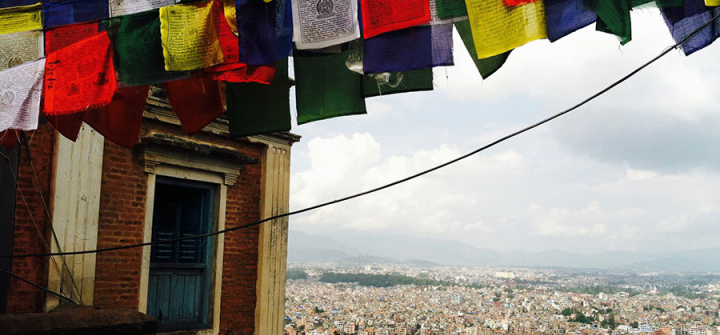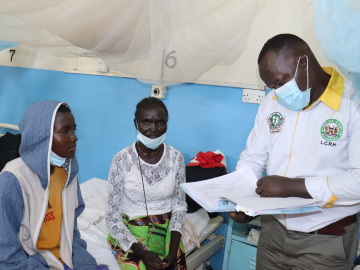How Emaline Laney Found the Untold Global Health Story of 2017
Emaline Laney is the reason that Global Health NOW sent journalist Joanne Silberner to Nepal to cover the devastating problem of burns, culminating in the 3-part "Blazing Injustice" series. Laney, who recently completed her MSc in Epidemiology at the London School of Hygiene & Tropical Medicine, nominated burns in Nepal for the 2017 Untold Global Health Stories contest, sponsored by CUGH, NPR’s Goats and Soda blog, and Global Health NOW.
Laney drew on her studies in Nepal for her entry, which reads in part: “My journey to study cholera quickly shifted as I found myself in a Nepali operating room with a team of plastic surgeons watching a burn-contracture-release of a child’s arm. This is a story about burns—the forgotten global health issue. Despite preventability, serious burns affect 11 million people annually, causing 265,000 deaths just due to fire (WHO). Low-income countries are disproportionally affected, encompassing 95% of the global burden. Nepal alone suffers from over 2,000 annual deaths due to burns. One major factor is that nearly 2/3 of Nepal’s population still relies on open fire. Inevitably, women and children are at high risk.” In this Q&A, Laney, who is now working on an MSc in Medical Anthropology at Oxford University and will attend medical school next year, tells GHN the story behind her nomination, and what she’d like to see change in resource-poor countries.
How did you end up in a Nepali operating room watching a burn-contracture surgery, and how did it change you?
Really by chance. Upon arriving in Nepal, I reached out to Dr. Shankar Rai, thinking he might be able to connect me with a doctor working on cholera. To discuss this possibility in person, I went to visit Dr. Rai at his outpatient clinic in Kathmandu. Sitting on a stool in the office, watching him attentively listen to each patient, I realized then that burns was the story that needed telling.
What did you find most striking about the people you met in Nepal, and the people Joanne Silberner profiled in her stories?
I was incredibly moved by Rai and his team’s relentless dedication and commitment—not only to their patients, but also to burn prevention. When they were not in the operating room, all energy was poured into bringing more attention and support to this hidden epidemic. They also demonstrated an inspiring ethos of perseverance and hope.
What changes do you hope this series will help bring about?
Despite having considered myself relatively well read in global health issues, I had no idea about burns until I traveled to Nepal. I was shocked. So, I hope this series will shed light on burns, particularly within the global public health community. In doing so, we can begin to divert more resources towards better understanding the epidemiology and improving advocacy and prevention of this ‘forgotten’ global health issue.
Who do you hope will read this series?
Since the publication of this series, I am thrilled to learn of the WHO’s recent launch of the Global Burn Registry. In addition to decision-makers at the WHO, I hope public health leaders in countries with high rates of burns read this series; it may be that the Nepal Cleft and Burn Center can offer a model of best practice other countries can implement.

Emaline Laney in Nepal
Epidemiology, Medical Anthropology, and Medicine is an intriguing combination. What do you dream of accomplishing once you complete your studies?
I plan to use medical anthropology to better inform the way I practice medicine and epidemiology to alleviate healthcare disparities at home (Atlanta, GA) and abroad. I am also excited to bridge these disciplines together; for it is only with a multi-disciplinary team that we can be begin to address these increasingly complex health issues that lie in the intersection of science, economics, politics, environment, and social justice.
Please see also GHN coverage of the 2016 Untold Global Health Story Winner, Bitter Harvest: Cassava and Konzo, the Crippling Disease and GHN's coverage of mycetoma, The Most Neglected Disease, which was selected as the 2015 Untold Global Health Story.
Join the thousands of subscribers who rely on Global Health NOW summaries and exclusive articles for the latest public health news. Sign up for our free weekday enewsletter, and please share the link with friends and colleagues: http://www.globalhealthnow.org/subscribe.html
Prayer flags fluttering above Nepal. Image Courtesy of Emaline Laney.





